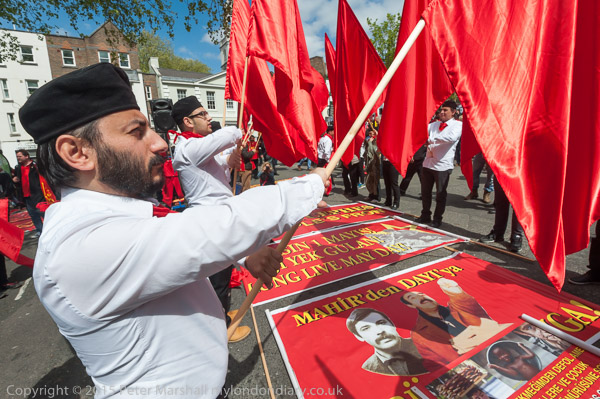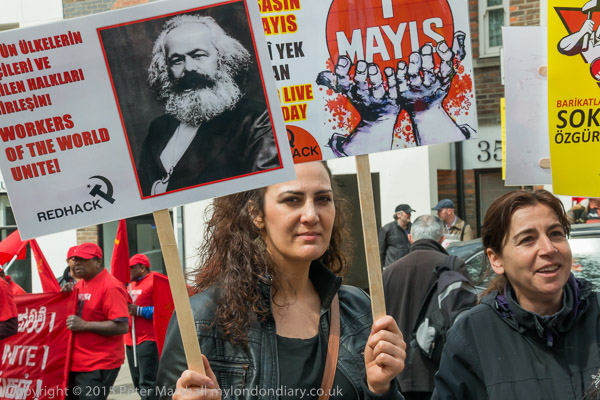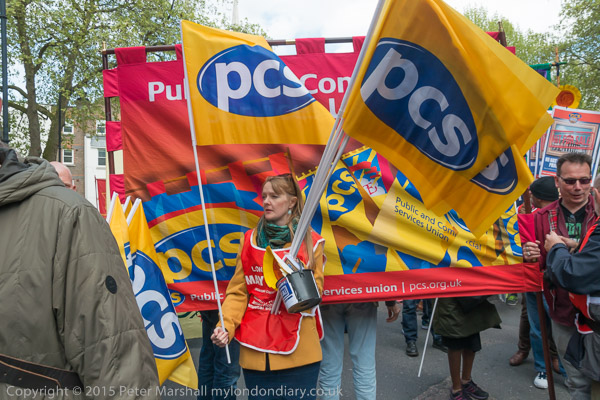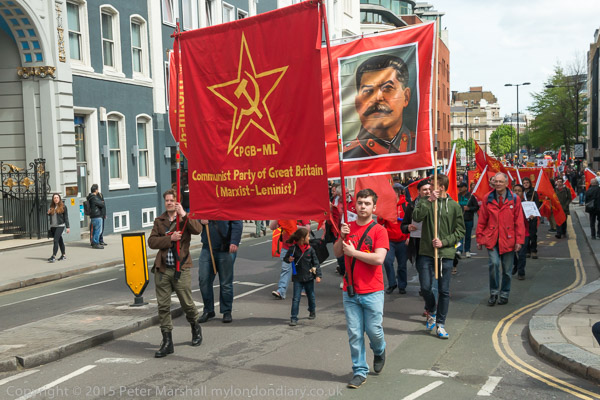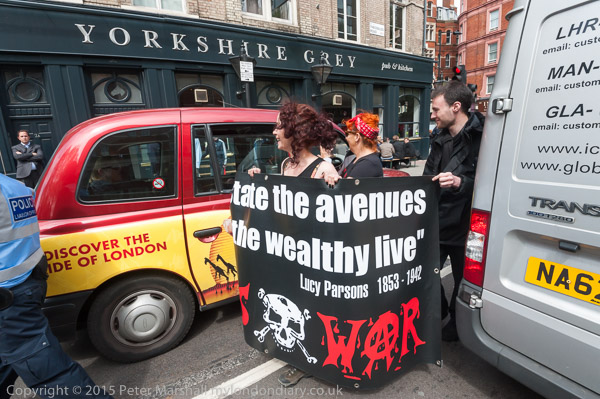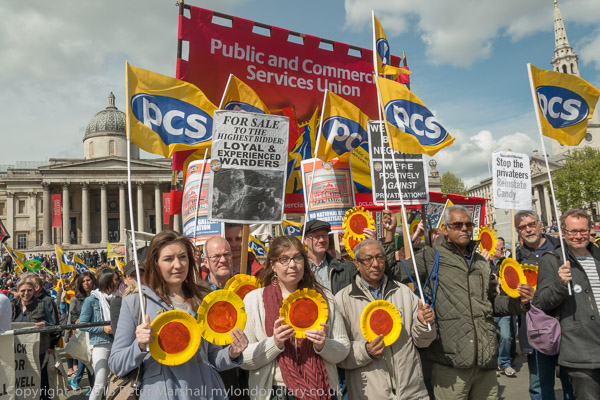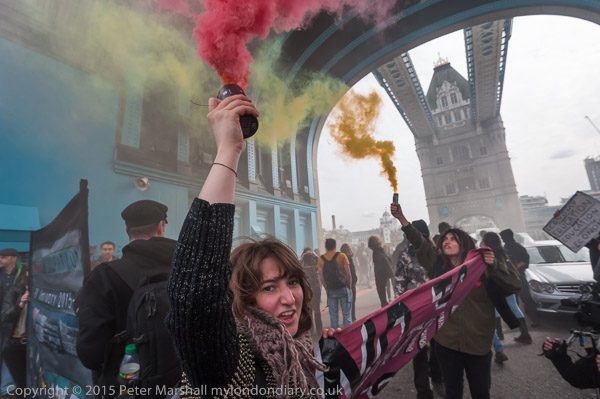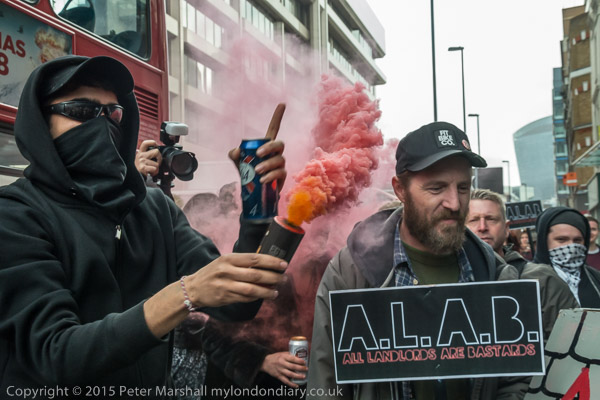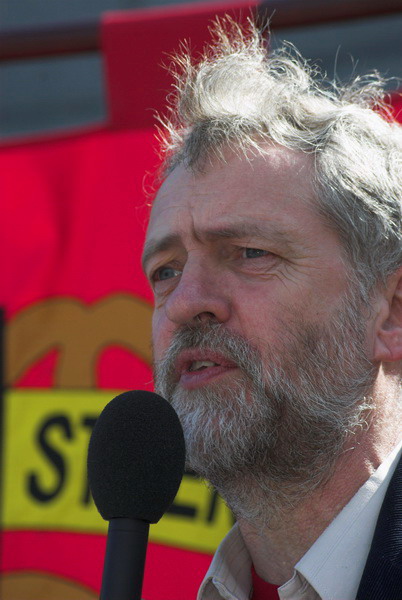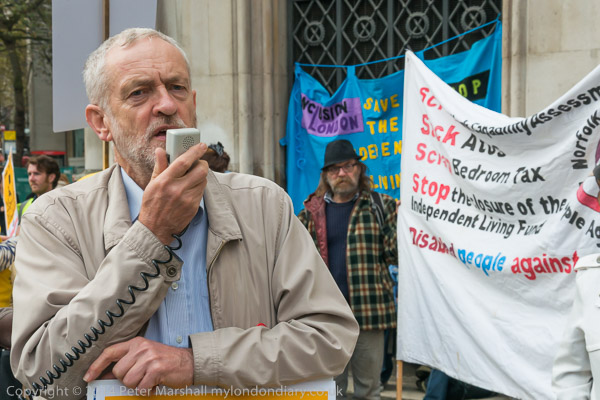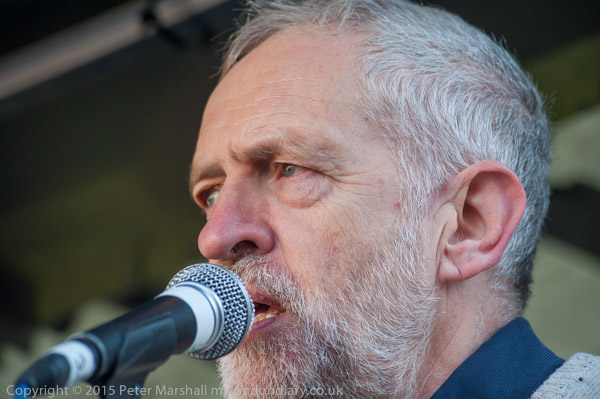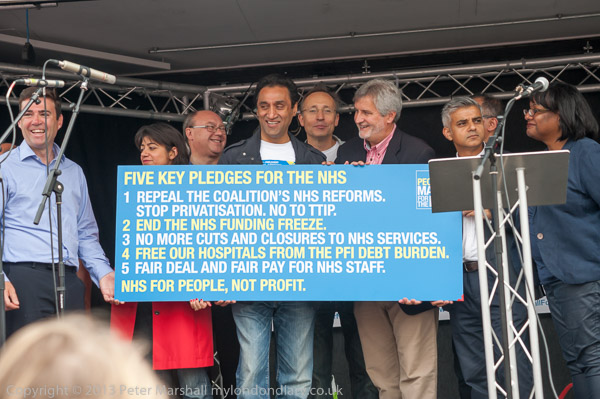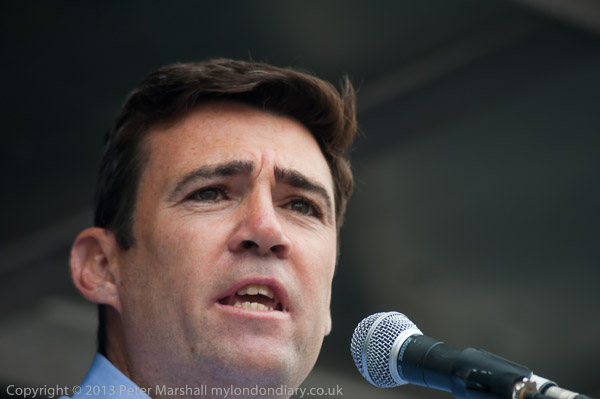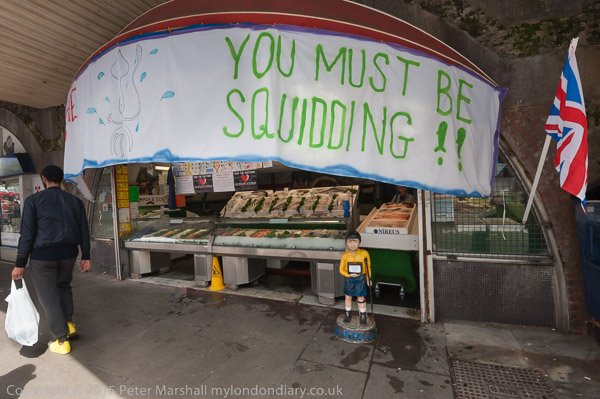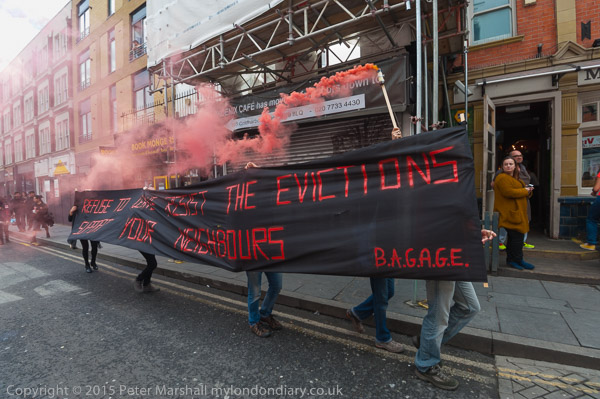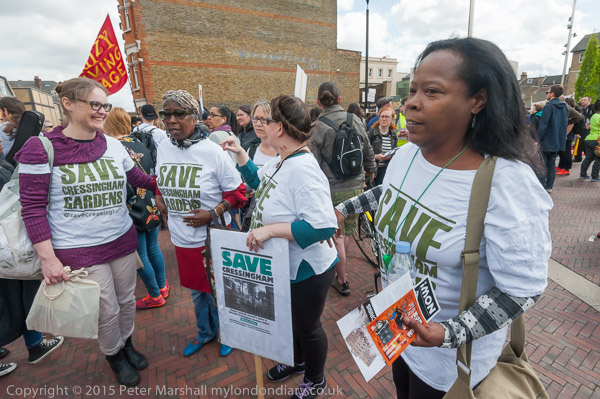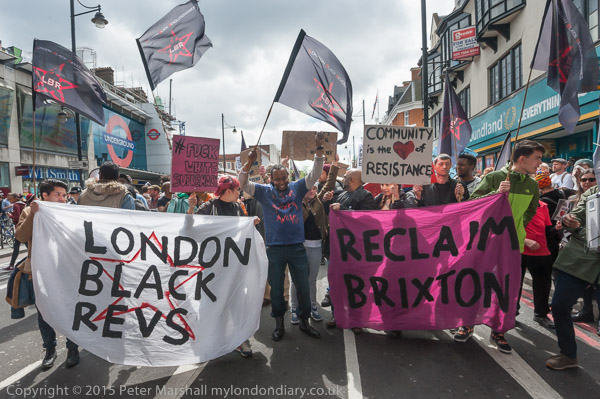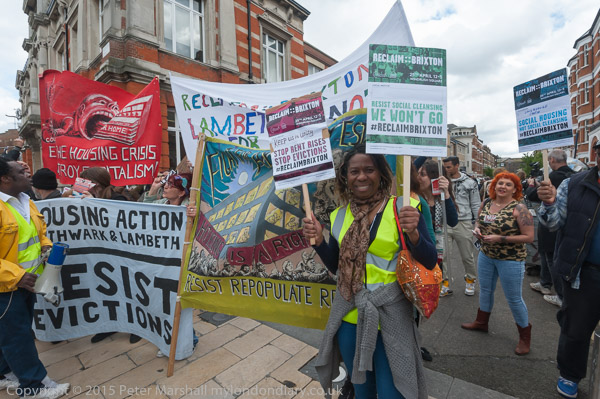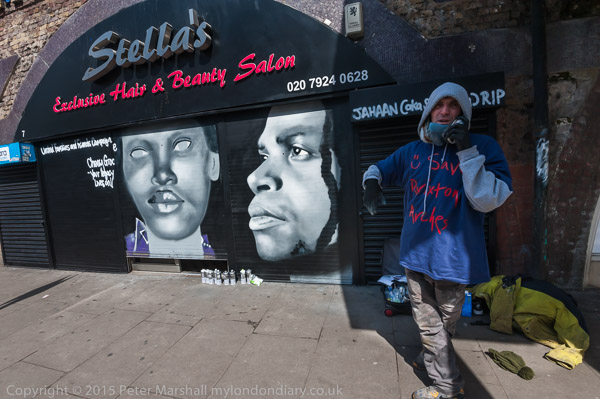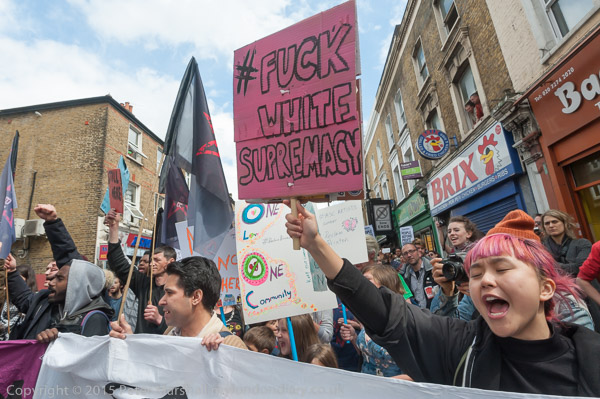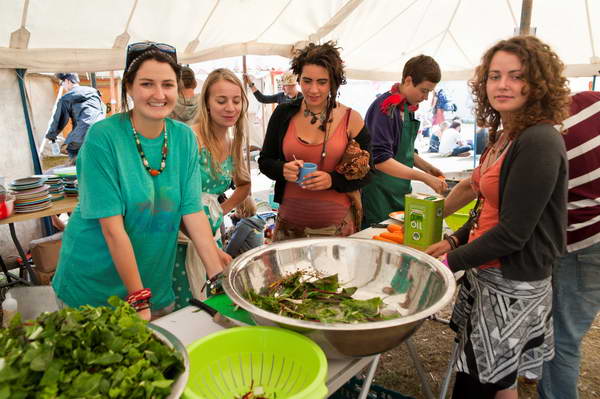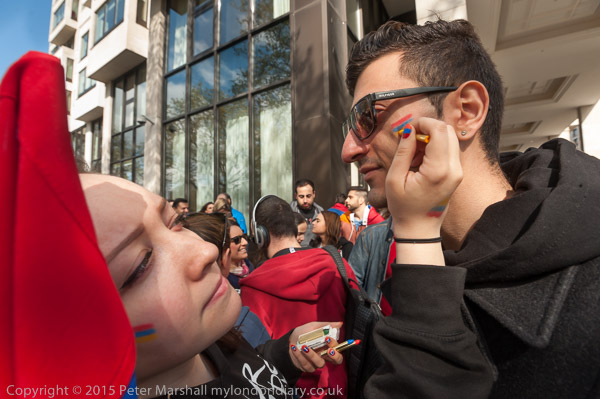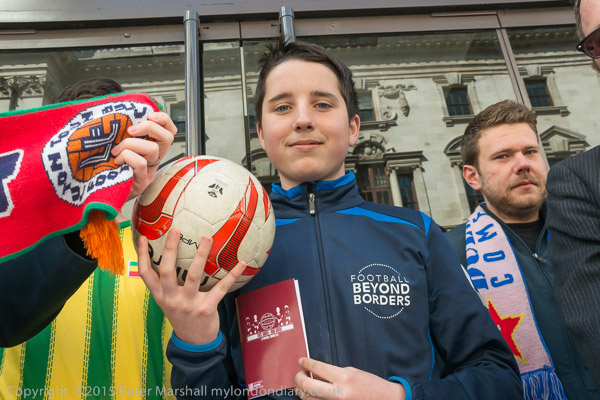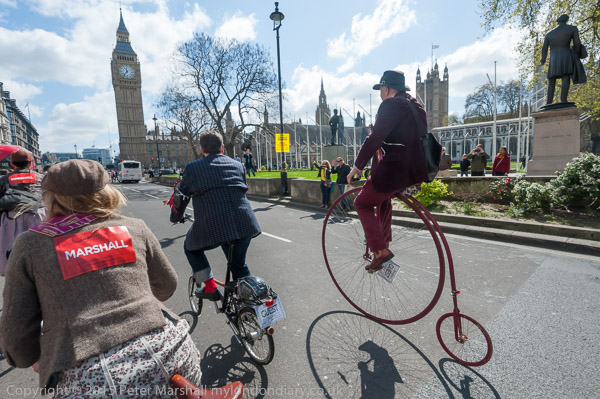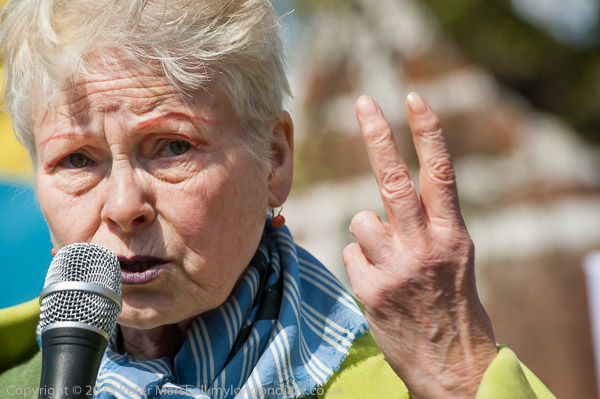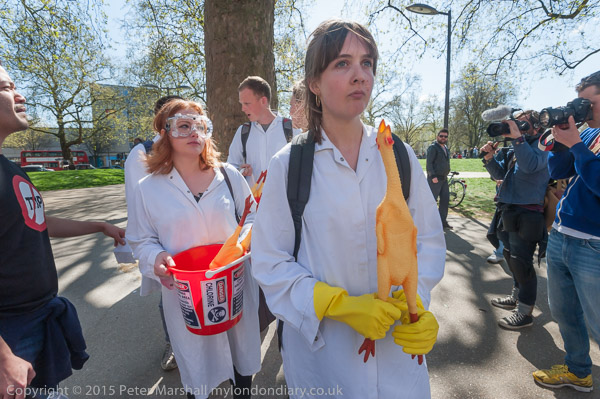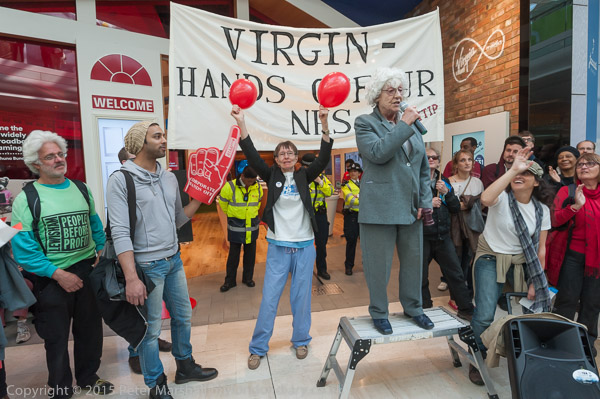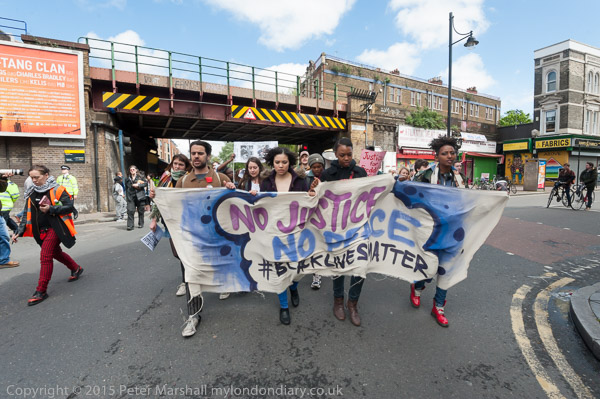
No Justice, No Peace – #BlackLivesMatter banner heads the march: Baltimore to Brixton – Black Lives Matter!
I was back in Brixton on Sunday May 2, for a march protesting after the killing of Freddie Gray in Baltimore and police attacks on his funeral. There had been huge protests in Baltimore, and others in solidarity in other cities across the USA, and this event in Brixton had been called by London Black Revs and other groups including the International People’s Democratic Uhuru Movement and Reclaim Brixton. There was also support from a number of other groups and I’d anticipated a rather larger event than it turned out.
Unfortunately there seems to be a divide between the more mainstream groups and the grass roots movements when it comes to protesting over black issues, and while many on the left are rightly appalled at the events, they fail to turn out at grass-roots organised protests such as this. There have also been internal problems in one of the organising groups which won’t have helped. But it would be good to see the left united on black issues in particular.
I arrived more or less on the dot for the protest, to find only a couple of police officers present in the area, and absolutely no-one at the address given, a property next to a street corner on Coldharbour Lane. I got out my phone and checked. Yes, I was in the right place at the right time. I walked a little way down the road and back again, meeting one woman I know who was also searching for the protest. We walked back to the meeting point and found now three students also looking for the protest.
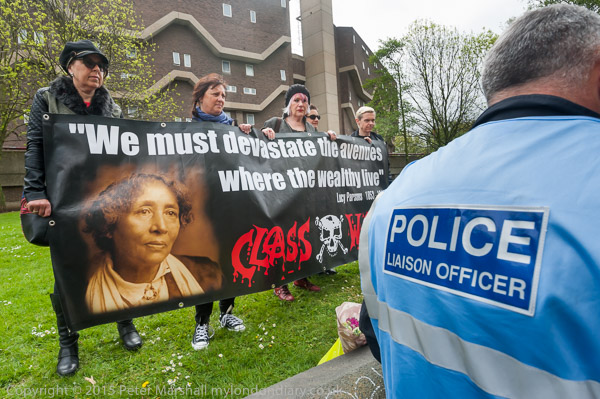
Slowly people arrived in ones and twos, and half an hour later a small crowd had arrived, icnluding a group from Class War with the Lucy Parsons banner. Still there was nothing happening, just people standing around and talking.
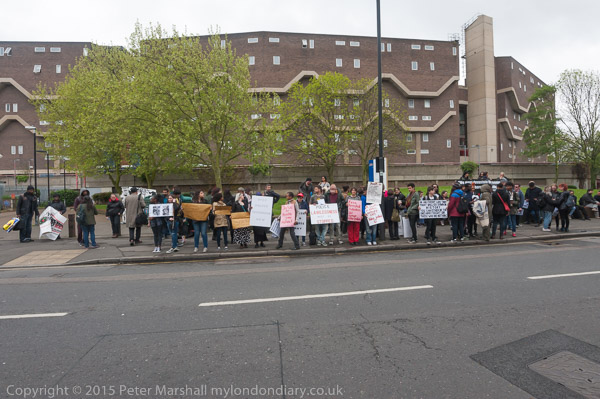
Some agency editors seem to prefer pictures like this.Not me
After a little more than an hour, someone organised people to stand with their banners alongside the curb. The view from the opposite side of the road was rather distant, and I always find such things boring. A thin narrow strip of protesters, the placards and banners too distant to read, and almost half the picture empty foreground. Exactly how not to photograph a protest, though if I were to send it with other images to the main agency that handles my pictures, its odds-on that some idiot editor would displace the image I’d selected as the lead image for the story with it.
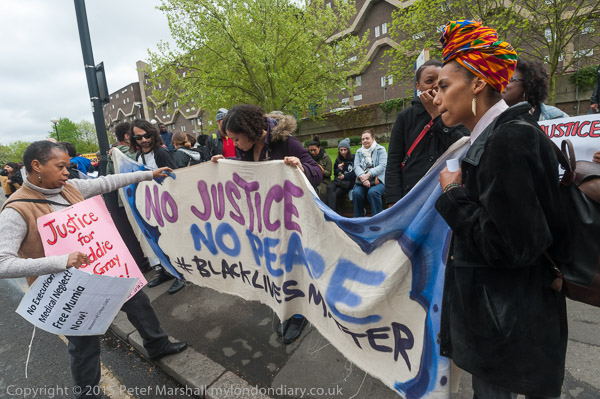
I moved in closer, at some risk from the traffic which was still coming along the road at times fairly densely, and tried to find something a little more dynamic. If there are banners and placards I want them to be legible, and I like a little animation. I didn’t quite manage what I was looking for, but there were several such as the above which were certainly better.
Finally around 75 minutes after I arrived, the march set off, not along the road as I’d expected, but through the centre of that long block behind the people in the view from across the road, going into the Moorlands Estate through the gap in the centre of Southwyck House.
The fairly narrow path here made photographing a little tricky, and I don’t think I did as well as I might; in the centre of the estate the march stopped briefly a little short of where I’d anticipated and climbed on a small raised area, and I had to jump down and rush back, perhaps missing the best of the action there.

The march then came out in front of the Guinness Trust Estate, where tenants and leaseholders are fighting against eviction, and I assumed it would stop at least briefly there in support, again I was wrong-footed (and disappointed) when it turned away and marched on.
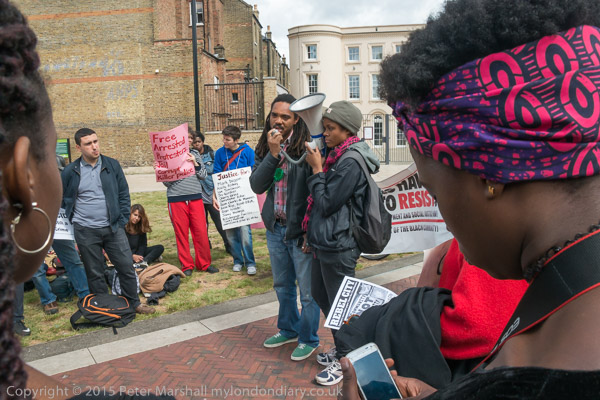
It made its way back past our starting point and under the railway bridge into the centre of Brixton (top image), going on to Windrush Square for a rally. Then it was time for more marching, up on the Brixton Road through the centre of Brixton – still fairly bustling even on a Sunday afternoon.
Again there was a small disappointment for me in that they marched past Brixton Police Station with its memorial tree to the victims of police killings without pause – given the nature of the event and the several speeches that had stressed the similar problems the black community has faced with police here it seemed to me an obvious target for protest – and the line of police outside showed they had come to the same conclusion.
The march went on to Loughborough Rd, marching through the centre of that estate and then returning down Coldharbour Lane – past the start point again and turning down to Number Six on Somerleyton Rd, a short life former kitchen given over to the community on a temporary basis.
The march was to continue from there after an interval there for rest and refreshment, but I’d had enough of walking around – we had already covered around 3 miles and left to catch a bus to Westminster, where I called in briefly at the Occupy Festival of Democracy before making my way home.
More on the march and rally at Baltimore to Brixton – Black Lives Matter!
